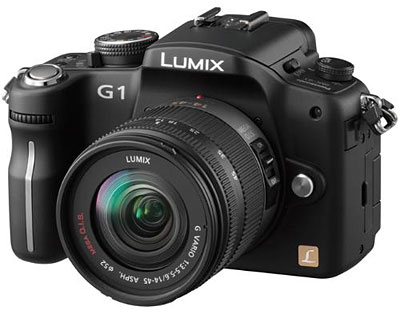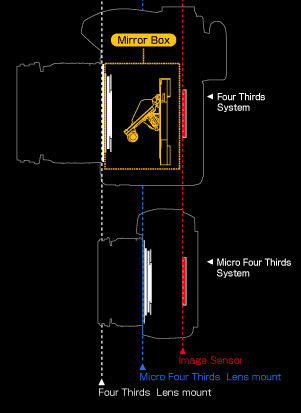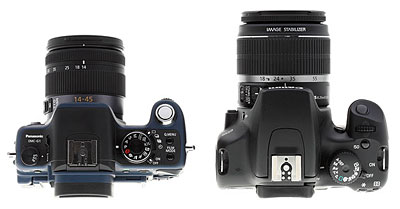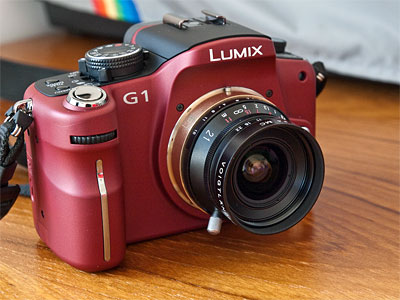| cameras
I use a Pentax *istDL for my digital work. It is a 6mp digital SLR. It's worked well for me but, now that I have a printer, the limitations of a 6mp are showing up. The maximum print size, without upressing is 10"x6.6". To print larger means more megapixels. I've been keeping an eye on the 12 to 14 megapixel cameras. The Pentax K20D has been in my sights but it's still around $1,000. But it would let me use my M42 prime lenses from my film Pentax SLR, which is a requirement. But now there is a very interesting new kid on the block.

It's the Panasonic Lumix G1. It looks like alot of other interchangeable lens digital SLRs but it's not an SLR. It's a new format called the Micro Four Thirds System. Olympus, with Panasonic, pioneered the Four Thirds System as a competitor to the APS-C sensors. It's a little smaller but has the improved image quality over the tiny sensors in most digital point and shoots. The APS-C sensors have a 1.5X and 1.6X crop factor while the Four Thirds have a 2X crop factor. It was supposed to result in smaller cameras but that never really happened and it hasn't been a real success. On to Plan B. Olympus has come up with Micro Four Thirds System. It uses the same sensor but eliminates the mirror box of the SLR.

This now makes it possible to make the camera much smaller.

This is fundamentally a new camera design. It's a Live View camera. The sensor is exposed for viewing and the viewfinder is not an optical viewfinder but an electronic one. Panasonic has used the technology from it's professional video cams for the viewfinder. It opens up some interesting possibilities beyond size.
Panasonic DMC-G1
Honey – I Shrunk The Camera or...Welcome Goldilocks
Panasonic Lumix DMC-G1
It's a very capable camera with excellent imaging. The big complaint the reviews have is that there are only two lenses available for it. They are very good lenses and they have image stabilisation built in but not much choice. Not so. This is where this camera gets very interesting. Because of the very short flange distance, the distance from where the lens mounts to the sensor. It's possible, with the appropriate adapter, to mount just about any lens made. Several DSLRs have had some of this capability. You can mount Pentax film lenses on a Canon. But this camera can also mount rangefinder lenses and the rangefinder people are going crazy.

That is a 21mm Leica Thread Mount lens. You can get an LTM adapter as well as a Leica M mount adapter and now all the photographers with Leica glass have an affordable digital camera they can use there lenses on.
G1 with Milich Adapter
Lumix G1 with Leica-M mount Lenses
And there are adapters coming out for just about every 35mm SLR lens made such as for M42 lenses, which I have a lot of. And it's affordable. 12 to 14 megapixel DSLRs run from $1,000 to $3,000 and up. The G1 is listed at $800. Store prices run around $675 and there is an eBay dealer from Canada putting up a lot of G1s and they are going for around $500. (By the way, there is no customs duty on cameras coming in from Canada to the US.) Time to start saving up my pennies.
update: DPReview reviews the Panasonic G1. DPReview always has the most extensive reviews. They really like the camera but complain about only two lenses being available. Ha! They don't realize what a great platform it is for just about every 35mm prime ever made as well as a lot of non-35mm lenses. You can put more lenses on this camera than any other camera ever made. |

